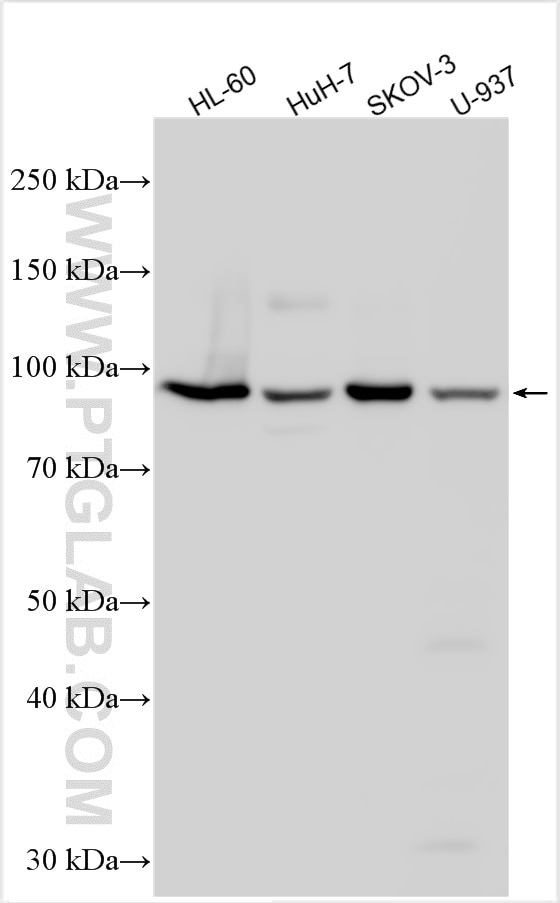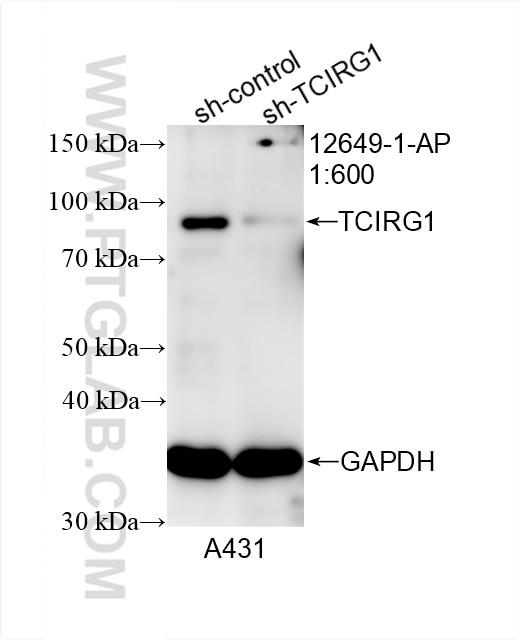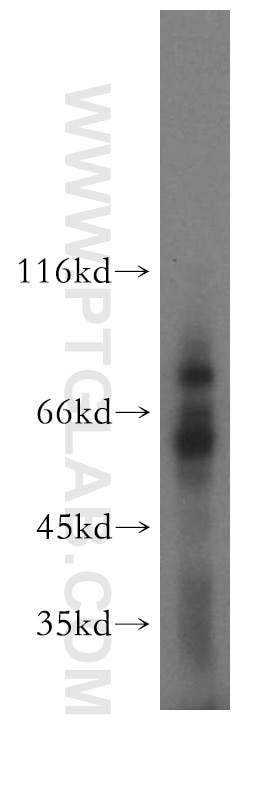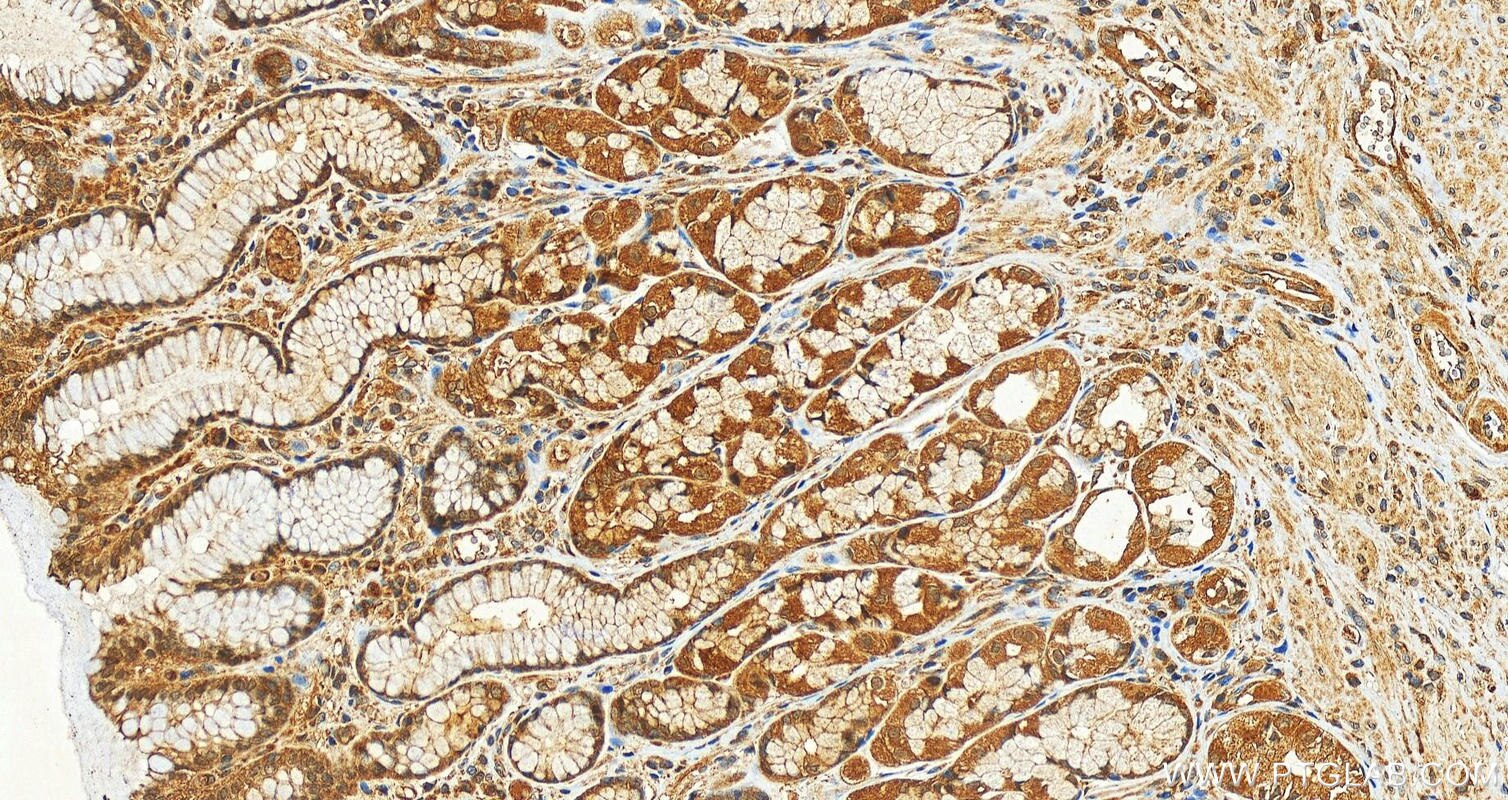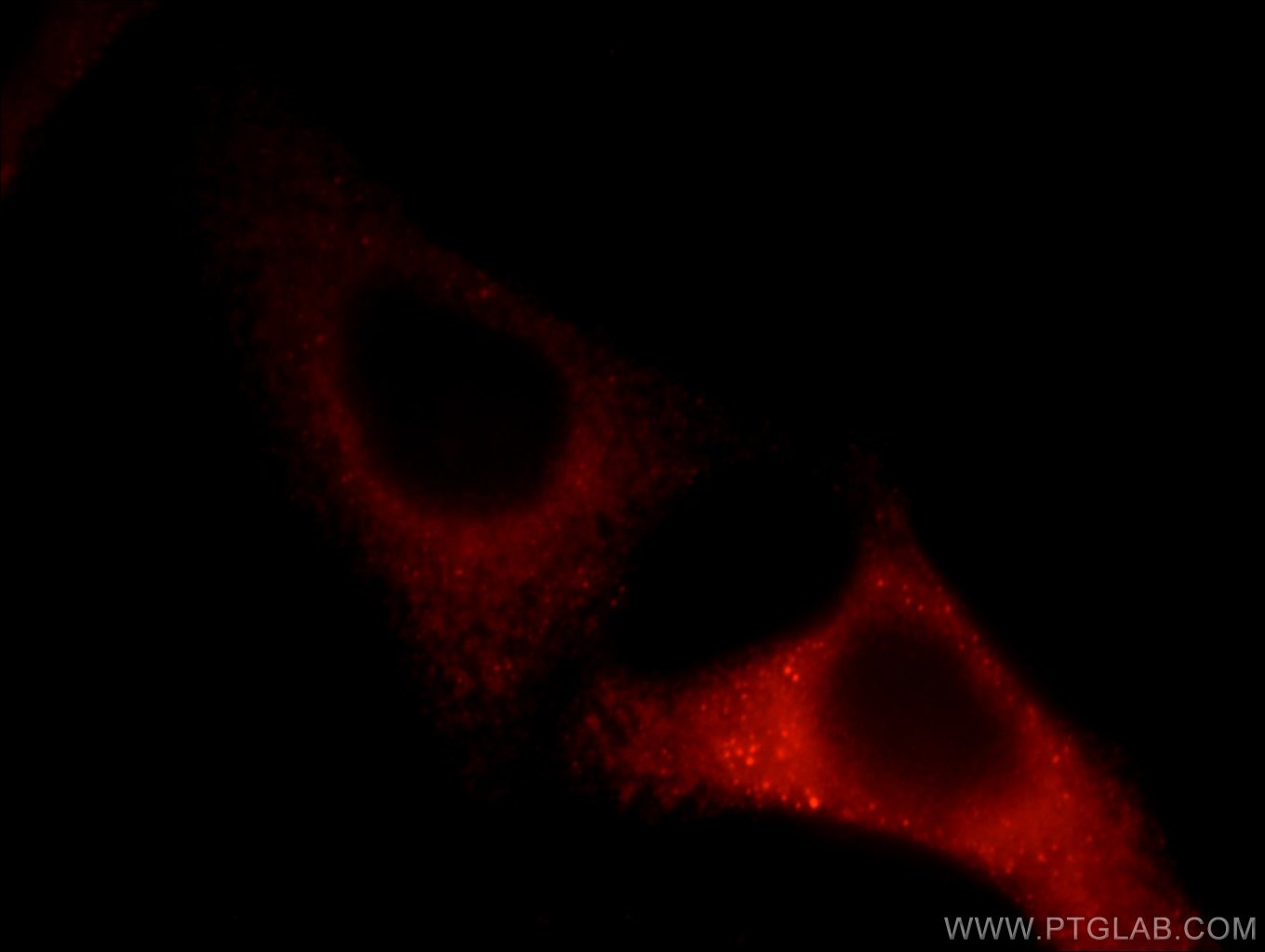Tested Applications
| Positive WB detected in | HL-60 cells, U-937 cells, A431 cells, HuH-7 cells, SKOV-3 cells |
| Positive IHC detected in | human stomach tissue Note: suggested antigen retrieval with TE buffer pH 9.0; (*) Alternatively, antigen retrieval may be performed with citrate buffer pH 6.0 |
| Positive IF/ICC detected in | HepG2 cells |
Recommended dilution
| Application | Dilution |
|---|---|
| Western Blot (WB) | WB : 1:500-1:2000 |
| Immunohistochemistry (IHC) | IHC : 1:50-1:500 |
| Immunofluorescence (IF)/ICC | IF/ICC : 1:10-1:100 |
| It is recommended that this reagent should be titrated in each testing system to obtain optimal results. | |
| Sample-dependent, Check data in validation data gallery. | |
Published Applications
| KD/KO | See 2 publications below |
| WB | See 6 publications below |
| IHC | See 3 publications below |
| IF | See 2 publications below |
Product Information
12649-1-AP targets TCIRG1 in WB, IHC, IF/ICC, ELISA applications and shows reactivity with human samples.
| Tested Reactivity | human |
| Cited Reactivity | human, mouse, pig |
| Host / Isotype | Rabbit / IgG |
| Class | Polyclonal |
| Type | Antibody |
| Immunogen |
CatNo: Ag3378 Product name: Recombinant human TCIRG1 protein Source: e coli.-derived, PGEX-4T Tag: GST Domain: 25-395 aa of BC018133 Sequence: CVSRLGELGLVEFRDLNASVSAFQRRFVVDVRRCEELEKTFTFLQEEVRRAGLVLPPPKGRLPAPPPRDLLRIQEETERLAQELRDVRGNQQALRAQLHQLQLHAAVLRQGHEPQLAAAHTDGASERTPLLQAPGGPHQDLRVNFVAGAVEPHKAPALERLLWRACRGFLIASFRELEQPLEHPVTGEPATWMTFLISYWGEQIGQKIRKITDCFHCHVFPFLQQEEARLGALQQLQQQSQELQEVLGETERFLSQVLGRVLQLLPPGQVQVHKMKAVYLALNQCSVSTTHKCLIAEAWCSVRDLPALQEALRDSSMEEGVSAVAHRIPCRDMPPTLIRTNRFTASFQGIVDAYGVGRYQEVNPAPYTIIT Predict reactive species |
| Full Name | T-cell, immune regulator 1, ATPase, H+ transporting, lysosomal V0 subunit A3 |
| Calculated Molecular Weight | 830 aa, 93 kDa |
| Observed Molecular Weight | 92 kDa, 65-70 kDa |
| GenBank Accession Number | BC018133 |
| Gene Symbol | TCIRG1 |
| Gene ID (NCBI) | 10312 |
| RRID | AB_10644329 |
| Conjugate | Unconjugated |
| Form | Liquid |
| Purification Method | Antigen affinity purification |
| UNIPROT ID | Q13488 |
| Storage Buffer | PBS with 0.02% sodium azide and 50% glycerol, pH 7.3. |
| Storage Conditions | Store at -20°C. Stable for one year after shipment. Aliquoting is unnecessary for -20oC storage. 20ul sizes contain 0.1% BSA. |
Background Information
TCIRG1, also known as V ATPase 116 kDa isoform a3, TIRC7, OPTB1, belongs to the V-ATPase 116 kDa subunit family, TCIRG1 seems to be directly involved in T-cell activation (PubMed:10329006). Alternative splicing results in multiple transcript variants. Isoform long is highly expressed in osteoclastomas. Isoform short is highly expressed in thymus (PMID: 15809087, 24753205). Mutations in TCIRG1 are associated with Osteopetrosis, autosomal recessive 1 (OPTB1)( PMID: 11532986).
Protocols
| Product Specific Protocols | |
|---|---|
| IF protocol for TCIRG1 antibody 12649-1-AP | Download protocol |
| IHC protocol for TCIRG1 antibody 12649-1-AP | Download protocol |
| WB protocol for TCIRG1 antibody 12649-1-AP | Download protocol |
| Standard Protocols | |
|---|---|
| Click here to view our Standard Protocols |
Publications
| Species | Application | Title |
|---|---|---|
Cancer Med Therapeutic efficacy of proton transport inhibitors alone or in combination with cisplatin in triple negative and hormone sensitive breast cancer models. | ||
Oncol Rep TIRC7 inhibits Th1 cells by upregulating the expression of CTLA‑4 and STAT3 in mice with acute graft‑versus‑host disease.
| ||
Front Microbiol Lactobacillus gasseri LA39 Activates the Oxidative Phosphorylation Pathway in Porcine Intestinal Epithelial Cells. | ||
Cancers (Basel) Integrative Analysis Identifies TCIRG1 as a Potential Prognostic and Immunotherapy-Relevant Biomarker Associated with Malignant Cell Migration in Clear Cell Renal Cell Carcinoma
| ||
Cancer Cell Int Glycolysis-related biomarker TCIRG1 participates in regulation of renal cell carcinoma progression and tumor immune microenvironment by affecting aerobic glycolysis and AKT/mTOR signaling pathway |

